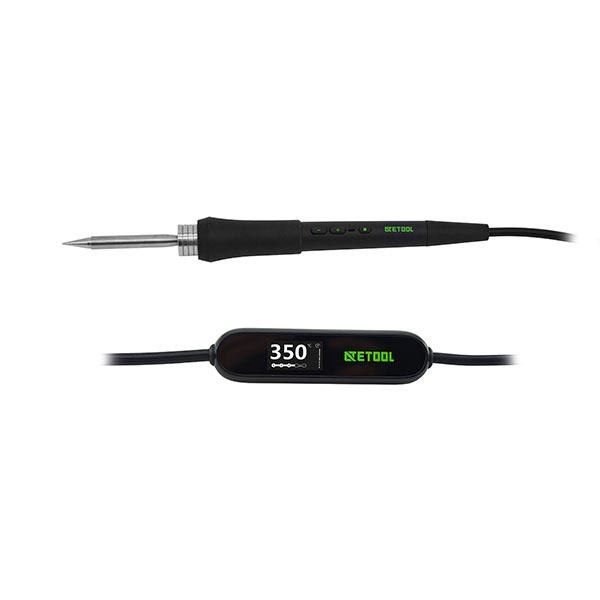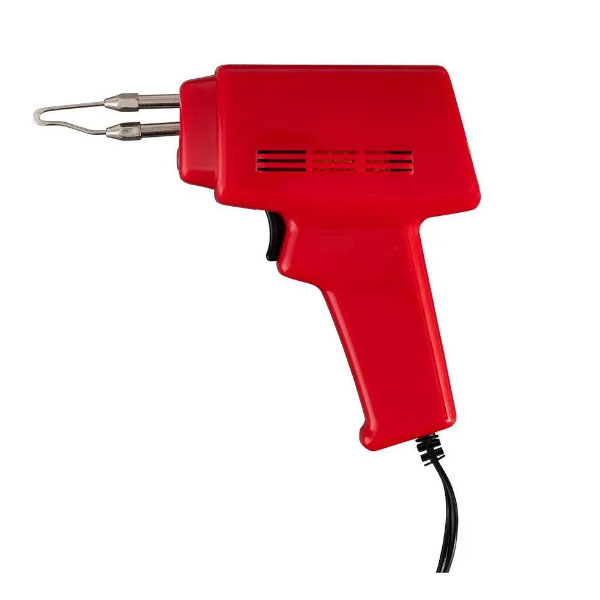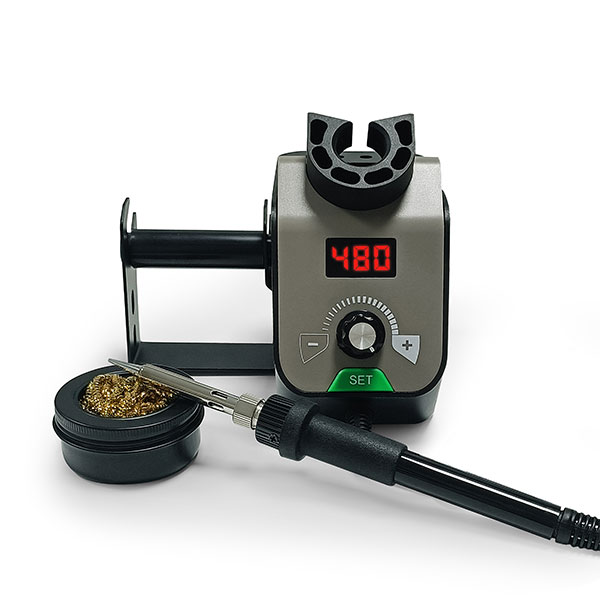A soldering iron is a tool that is used in the process of soldering. Soldering is a technique in which two or more metal items are joined together by melting and flowing a filler metal into the joint and then allowing it to cool and solidify. Soldering is commonly used in electronic circuits and other small items where a strong, electrically conductive connection is needed.
The soldering iron is the heat source used in the soldering process. It consists of a metal tip heated to a high temperature, typically between 350 °C and 420 °C. The tip is then used to melt the filler metal, which is called solder, and flow it into the joint between the two metal pieces being soldered.
There are many different types of soldering irons available, ranging from simple, low-cost models to more complex, specialized tools. Some common types of soldering irons include:
Pencil soldering iron: This is a small, lightweight soldering iron that is shaped like a pencil. It is typically used for small, delicate soldering jobs, such as working on electronic circuits or jewelry.

Gun soldering iron: This type of soldering iron is shaped like a gun and has a trigger that is used to heat the tip. It is typically used for larger soldering jobs, such as soldering pipes or other large metal items.

Stationary soldering iron: This type of soldering iron is a more heavy-duty tool used for larger soldering jobs. It is typically mounted on a stand and has temperature control to adjust the heat of the tip.

In addition to the type of soldering iron, there are also different tip sizes and shapes available. The size and shape of the tip are essential because it determines how much heat can be applied to the joint and how easily the solder can flow into it. Common tip sizes range from 1mm to 10mm, and common tip shapes include conical, chisel, and pointed.
Using a soldering iron requires some skill and practice. The process typically involves the following steps:
Clean the metal pieces to be soldered: The first step is to clean the metal pieces to be soldered. This is important because any dirt, grease, or oxidation on the metal can prevent the solder from adhering properly. The metal can be cleaned using a brass brush or other cleaning tool.
Heat the soldering iron: The next step is to heat the soldering iron. This is typically done by plugging it in and turning it on, and then adjusting the temperature if necessary. The tip of the soldering iron should be heated until it is red hot.
Apply the solder: Once the soldering iron is hot, the solder can be applied to the joint between the metal pieces. This is typically done by holding the end of the solder wire against the joint and touching the soldering iron to it, allowing the heat to melt the solder and flow it into the joint.
Remove the soldering iron: Once the solder has flowed into the joint and cooled, the soldering iron can be removed. This can be done by simply pulling the soldering iron away from the joint.
Clean the joint: After the soldering iron has been removed, the joint should be cleaned. This can be done using a damp sponge or other cleaning tools to remove any excess solder or flux residue.
Using a soldering iron can be a challenging task, and it requires some practice and skill to get it right. However, with some patience and attention to detail, anyone can learn how to use a soldering iron and create strong, reliable joints using the soldering process.
One of the key benefits of using a soldering iron is that it allows for the creation of strong, durable joints. When properly done, soldering creates a joint that is strong enough to withstand the stresses and strains of everyday use. This makes it a popular choice for a wide range of applications, including electronic circuits, plumbing, jewelry making, and more.
In addition to its strength, soldering is also a relatively low-cost and low-tech process. Soldering irons and other soldering equipment is widely available and can be purchased at a reasonable cost. This makes it an accessible option for those who need to join metal items but do not have access to more expensive or complex tools.
Another benefit of soldering is that it allows for precise, controlled joints. The ability to adjust the temperature of the soldering iron and carefully apply the solder provides fine control over the joint being created. This is particularly useful in applications where the joint needs to be precise, such as in electronic circuits or other sensitive equipment.
There are some limitations to the soldering process, however. One of the main limitations is that it is only effective for joining metal items. Soldering cannot be used to join items made from other materials, such as plastic or wood. In addition, soldering is not suitable for creating joints that will be subjected to extreme temperatures or high levels of stress.
Overall, a soldering iron is a valuable tool that can be used to join metal items together. Its strength, low cost, and precision make it a popular choice for a wide range of applications. While it has some limitations, soldering is a reliable and effective technique that can be mastered with some practice and skill.
Contact: Mr. Li
Phone: (0086) 138 24254 321
E-mail: atetool@atetool.com.cn
Add: 5F, 1-2# Building, Tongfuyu Industrial Zone, Aiqun Rd, Shiyan Subdistrict, Bao'an, Shenzhen, 518108, China